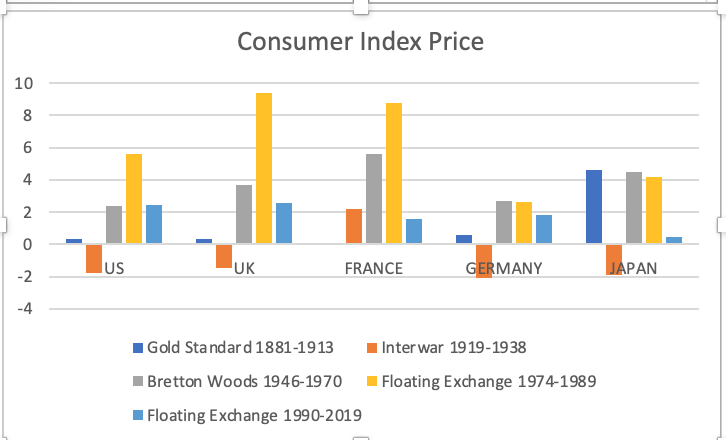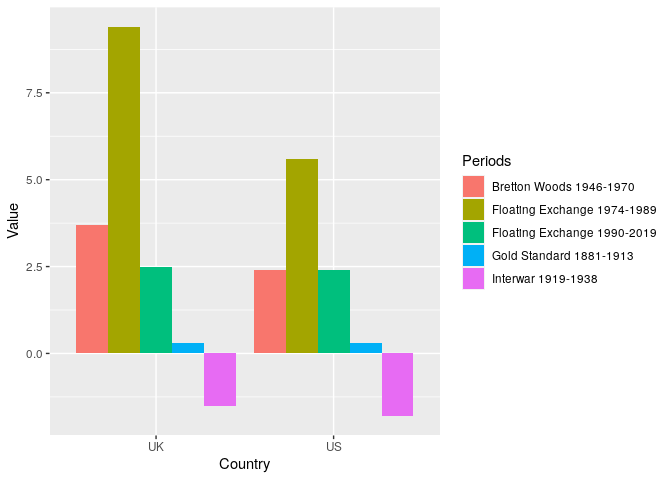I have the following information:
library(readr)
test <- read_csv("test.csv")
View(test)
test
A tibble: 25 x 3
Country Periods Value
1 US Gold Standard 1881-1913 0.3
2 US Interwar 1919-1938 -1.8
3 US Bretton Woods 1946-1970 2.4
4 US Floating Exchange 1974-1989 5.6
5 US Floating Exchange 1990-2019 2.4
6 UK Gold Standard 1881-1913 0.3
7 UK Interwar 1919-1938 -1.5
8 UK Bretton Woods 1946-1970 3.7
9 UK Floating Exchange 1974-1989 9.4
10 UK Floating Exchange 1990-2019 2.5
… with 15 more rows
And I want to do a grouping bar in studio but I done know how to do it,
it is something like the photo
I really appreciate if you can help me

